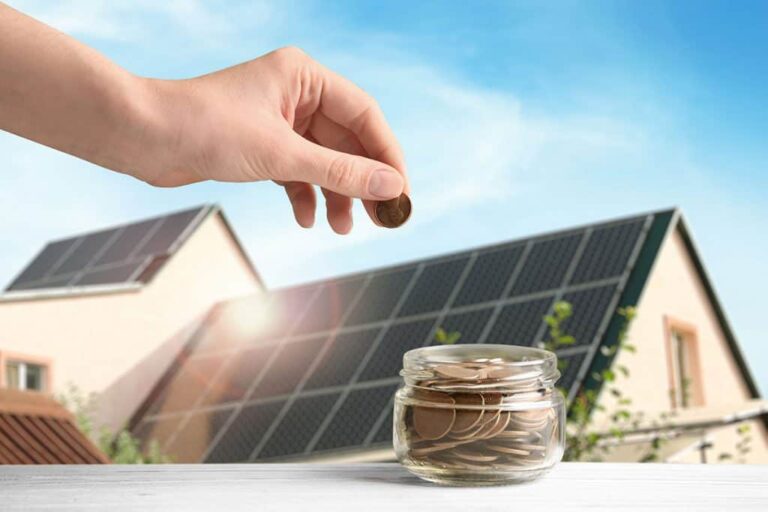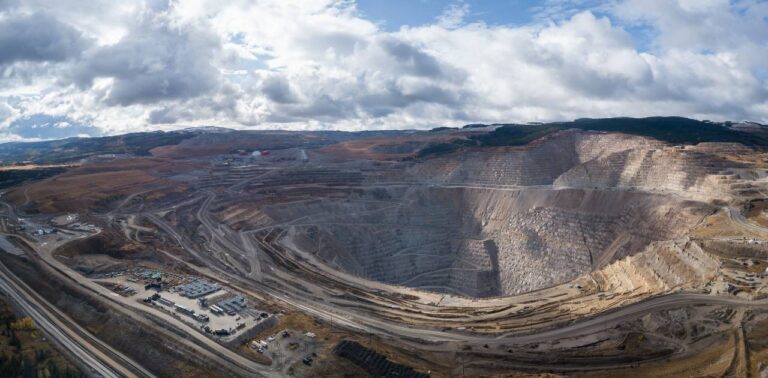Advertisements
Did you know that Longa Vida packaging can do much more than just store your favorite foods? Yes, these boxes can be transformed into an efficient thermal insulator, reducing the temperature in rooms by up to 8º C! Let's explore how you can reuse these packaging to create a thermal insulation system that is good for both your wallet and the environment.

The Reuse Revolution
Long-life packaging is an excellent alternative to reducing the amount of waste in landfills. Instead of simply throwing away these packages, you can reuse them as thermal insulation. The recycling process, although viable, is not always the most practical option. Reusing offers a simple and affordable solution that can even be done by hand.
How to Transform Long-Life Packaging into Thermal Insulation
Turning Long Life packaging into thermal insulation may seem like a bit of work, but the results are worth it. Here’s a step-by-step guide to creating your own insulation blankets:
- Start by opening the boxes completely, detaching the seams and making a vertical cut so that the packaging is completely flat.
- Wash the packaging thoroughly with water, soap and a little disinfectant to ensure that it is clean and free of residue.
- After drying, glue the packages side by side using white glue, shoe glue or staple them, forming a blanket. This blanket should be placed on the upper slab of the house, below the roof.
To ensure effective thermal insulation, it is essential that the blanket does not touch the tiles directly. Leave a minimum space of two centimeters to allow air circulation, which helps to optimize the insulating effect.
Ideal Composition for Thermal Insulation
Long Life packaging is made up of 5% of aluminum, 20% of plastic and 75% of cardboard. This combination is perfect for creating thermal insulating linings. Aluminum, in particular, is excellent at reflecting more than 95% of heat, which helps to keep the internal temperature of environments lower and more comfortable.
Cost and Benefits
One of the biggest attractions of Longa Vida blankets is their low cost. This solution is ideal for slums, low-income housing and warehouses, where budgets may be tight. Installing the blankets does not require specialized labor and, in addition, aesthetics are not a primary concern. However, the popularity of this idea is growing among a wider audience, who value both the savings and the benefits to the environment.
Efficiency in Various Conditions
In addition to being an effective solution for heat, Longa Vida packaging blankets also prove useful in cold climates. They help to cover gaps and keep homes warm during the winter, providing comfort even in adverse conditions. This approach not only helps to reduce heating costs, but also improves the energy efficiency of homes.
Guides and Resources
If you’re interested in creating your own insulation blankets, there are a variety of resources available to help you. Many videos demonstrate everything from simple to more elaborate projects, giving you a hands-on look at how to implement this solution in your own home.
Reusing Longa Vida packaging as thermal insulation is a smart and sustainable way to reduce waste and improve environmental comfort. By opting for this solution, you not only contribute to preserving the environment, but also save on energy costs. Try it out and see how this practice can transform your home, making it more efficient and environmentally friendly.
Check out other interesting facts about recycling clicking here.
Learn how to make art by recycling, Click here.




I found it very important to recycle these ideas
Good evening! I have worked with long-life packaging and also thermal insulation. I can say that I will use long-life packaging in my house, because it has 3 layers of polyethylene where the aluminum does not oxidize and lose its effect. There are “thermal” insulation products that are not even close to long-life packaging. Here’s a tip! Hugs
Thank you very much for your contribution, Oswaldo!
Sensational
It is very important to reuse packaging for other sustainable uses.
Exactly! It would be even more efficient than recycling, but it would need to be encouraged to occur on a large scale.
I loved the idea!
I just have one question: can the aluminum side (the silver one) face down, towards the environment, or does it have to face the roof? Does it make any difference? Does it change the efficiency?
It stays as it is in the photos and videos, Natália, aluminum down!
Hello Ricardo, good afternoon, the use of Longa Vida packaging as thermal insulation helps to reduce the temperature in environments by up to 8º C. I saw on other websites that it is important for the aluminum part to be facing upwards, towards the roof, so that circulation can occur, and now, I have a doubt.
Natália and Eunice, I included the video that recommends the metal part facing up. It seems to work both ways, but I'm trying to figure out which one is more efficient. As soon as I have answers, I'll let you know here. Thanks for understanding!
I did this two years ago and turned it upside down and didn't see any difference in the heat. Now, after reading your instructions, I'm going to take everything out and turn it upside down to see if it works. The room is like an oven, I don't know if it's because the tiles are those cardboard ones that I can't remember the name of right now. The room is on the top floor and has two windows and I don't know why it's so hot. There's no ceiling and the PVC lining is right below the tiles. Since I have to change some tiles, I'm going to take advantage and change the side of the milk cartons.
Sueli, it would really help if you photographed and documented each step of the process so we could later turn it into an article. I know few people as dedicated as you. Congratulations!
For the curtain, does the aluminum side face the inside of the house or the window side?
Proceed as in the photos, always going inside the house (it's as I always saw in the images)
I saw on another website that if the aluminum side is placed downwards, the environment becomes heated, to cool the aluminum side facing upwards, to keep the heat between the lining of milk boxes and the roof.
I have included the video you sent. Thank you!
Goodnight,
I would like to know if this type of thermal insulation is recommended for container house structures. Thank you.
I have not found any reference to this. As a thermal insulator, Tetra Pak blankets will always work, but I cannot say whether they are as efficient as expected in a metal structure.
Hi Ricardo Ricchini, I would like to know the following: I have a room with tiles protecting it from the rain and the ceiling is made of simple wood. When the sun is shining, the room gets very hot, almost unbearable. I wouldn't be able to put the long-life lining over the ceiling, as shown in the photos, but I could put the long-life lining between the tiles and the wooden ceiling. Is this also efficient?
If you don't follow the specifications, the result should be less efficient, but functional all the same. Try it on a small area to see if the result is satisfactory. I've added an additional video to help.
Does it work for cars? I have a van….
It probably works… How about recording the process (photos, video) and sending it to us for publication here in the Recycling Sector?
Good evening! I would like to make a thermal insulator for my dogs' house, which is in the area, but the objective is to protect against the cold, can I do it the same way? Thank you.
Bruna, I updated the article with a video that shows Tetra Pak blankets protecting from the cold as well. I hope it helps.
Hello, I would also like to know if it can be used to insulate against the cold.
Grateful.
Yes, it does, Camila. In principle, thermal insulation works for both cold and hot weather, because one of its functions is to maintain the temperature of the internal environment. Perhaps Styrofoam trays are also efficient… In any case, I updated the article with a video showing that Longa Vida blankets work in cold weather.
Good afternoon!
I'm building my house, and I haven't plastered the ceiling yet, there are only the Styrofoam parts, we're not sure if we can just put the boxes directly on the Styrofoam, if we have to plaster them with plaster or cement, which is the best alternative? And how many boxes do I make 1m² for each one?
Hello! I would like to know if there is a stronger way to join the boxes, as I would like to make a greenhouse for an organic garden.
Try using silver tape 😉
I'm making a blanket out of milk cartons to line the shed at home and the quickest and most reliable method I found to join the boxes together was sewing them together on my home sewing machine, it's working really well!
Very good, Eliane! Thanks for sharing your experiences.
Mr. Ricardo Ricchini, whenever you publish a photo that is not yours, you must include the reference. Here is the original photo link.
Fabiana, believe me, I try to be careful, but sometimes I can't find the link. Please send me the link and indicate which photo it is so I can identify it.
Good evening, Mr. Ricardo. I have a question. I sell ice creams in a cooler box and I would like to know if I line my box with these long-life milk cartons if I can reduce the temperature inside the box and thus keep my ice creams preserved for much longer. Thank you. I await your response.
Hello Maria Helena. The ability of a thermal insulator is to hinder the dissipation of temperature. It is a barrier to the passage of heat. In other words, without a thermal insulator, the ambient temperature would quickly equal the temperature of your cooler.
Therefore, lining the box with long-life packaging will not reduce the temperature.
Since your box is already thermal, that is, it already contains thermal insulating elements, what Longa Vida packaging can do is enhance the box's ability to maintain its temperature a little more, but I imagine it will be subtle.
We'd love for you to test it out and come back to us with your results.
Hello, I would like to know where I can donate the separate boxes from my Condominium!
Mr. Ricardo
I would like to know if juice packaging can also be used to make these plates.
If they are Long Life packaging, yes they are suitable.